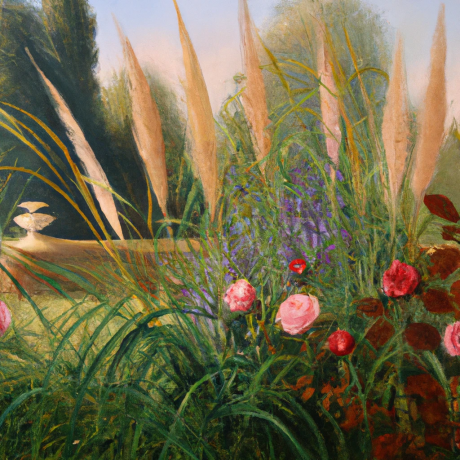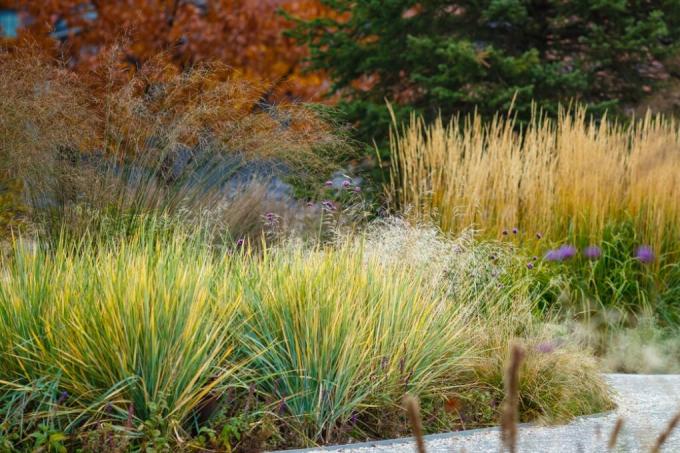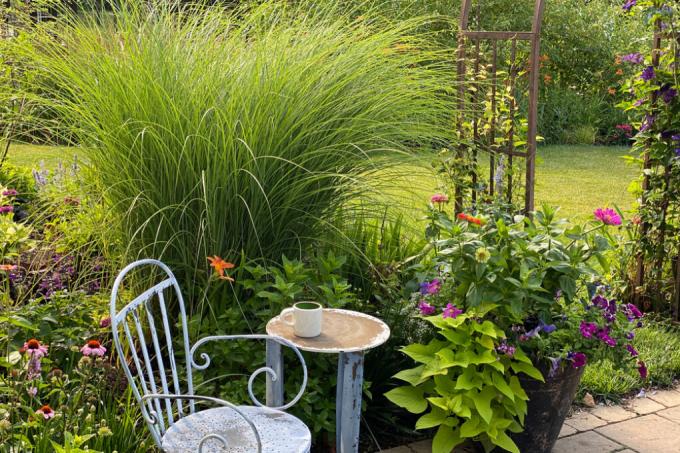AT A GLANCE
How do you combine grasses correctly in the garden?
What factors should be considered when combining grasses?
In order for the grasses to come into their own in the combination, you should consider the following factors when designing:
- Straw color: green, cyan, red, yellow or silver-grey
- heyday: May to August
- Location Requirements: sunny to semi-shady, sandy and well-drained soil
- growth height: up to 250 cm
also read
Small grasses are best combined with low perennials. On the other hand, large grasses are more suitable for combinations with tall perennials and shrubs. Depending on the growth height, the grasses should be placed either in the foreground or in the background of a bed.
Most grasses prefer a sunny location. Only a few specimens prefer to grow in the shade. Choose companion plants for the grasses that suit their site requirements so that the interaction works to everyone's advantage.
Grasses adorn the landscape with their long panicles or spikes during the flowering period and also beyond autumn and winter. They are therefore particularly advantageous with magnificent perennials that are in bloom in late summer or autumn.
Combine grasses in the bed or in the bucket
Taller grasses like that pampas grass or Chinese reed achieve an impressive long-distance effect in the bed. You are welcome to put colorful perennials and low trees in the foreground. Smaller grasses like that feather grass and the blood grass fit in impressively in the vicinity of small perennials such as cushion asters and sedum.
Among other things, the following harmonize perfectly with grasses:
- roses
- hydrangeas
- bamboo
- ferns like male fern, Ostrich Fern and Polypody Fern
- lavender
- asters
- coneflower
- anemones
Combine grasses with lavender
Both most grasses and lavender like sunny and rather dry locations. Plant tall grasses behind a group of lavender and place low grasses up to 50 cm high next to several lavender plants. In mid and late summer, the interplay between the violet blossoms of lavender and the more subdued panicles of grass is impressive.

Combine grasses with hydrangeas
Hydrangeas go well with grasses that are taller than themselves. It is also important that the respective grasses like a semi-shady location, since the majority of hydrangeas do not feel particularly comfortable in the blazing sun. Whether pink, white or blue hydrangeas is up to your taste.

Combine grass with roses
Roses often appear rather severe and dimensionally stable. In company with the roses, grasses ensure a pleasant relaxation. They play charmingly around the taut rose shoots and large blossoms and, with their usually lighter color, form a pleasant balance to the bright colors of the roses.

Combine grasses as a bouquet in the vase
The flower stalks of numerous grasses are ideal for cutting vases. With them in your luggage, you can visually enhance all bouquets and make them look a bit more playful. For example, surround pink autumn anemones and white roses in the bouquet with bright spikes of flowers Switchgrass or lamp cleaner grass.
- roses
- asters
- dahlias
- chrysanthemums
- Autumn Anemones
- phlox









